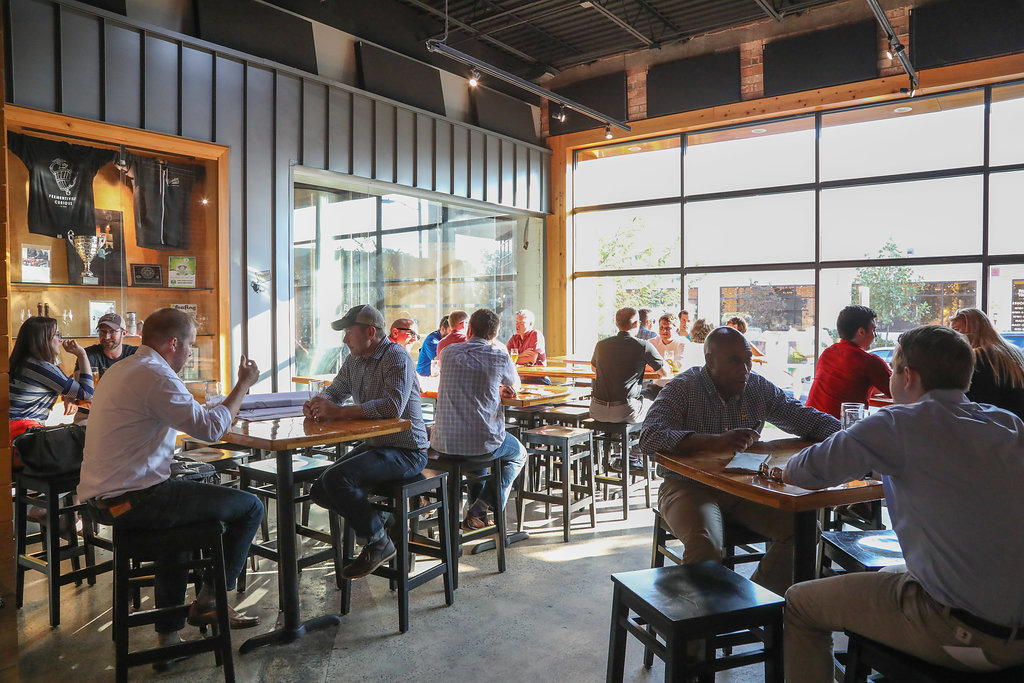States are slowly beginning to reopen following coronavirus-related closures and some restrictions are lifting for breweries, cideries, and wineries. With capacity restrictions, social distancing requirements, and increased cleaning procedures, beverage businesses must completely rethink customer experiences from the moment they walk in the door to the second they leave.
5 Tips for Reopening Your Taproom or Tasting Room
Clean, clean, clean
For the safety of guests and staff, update cleaning procedures to include all frequent touchpoints. Envision how customers will interact with your space — from opening the front door and touching a menu to tapping your POS screen or grabbing a pen to sign a receipt. Your taproom, bathrooms, and outdoor seating areas (if applicable) will require more frequent cleaning, and many guests will expect to see evidence of your enhanced cleaning procedures. That means wiping down tables, chairs, door handles, and menus; providing clean pens or contactless payment; having glass rinsers visible or using disposable drinkware; and making hand sanitizer or wipes available. And regardless of your local mandate, provide PPE to staff (and require that they wear it) to help guests and employees feel more comfortable.
Make your life easier by reducing the number of touchpoints — keep your front door open so no one touches the handle, install foot-operated door openers for restrooms, and create a large menu board or digital menu to avoid printing disposable menus or cleaning laminated ones. You can also post a QR code on your bar, tables or front door that customers can scan to find the digital version. Additionally, contactless payment through certain POS apps helps avoid the exchange of cash or credit cards.
Socially close; physically distant
Pay attention to your local regulations in case they are stricter, but the general rule of thumb is to ensure parties stay at least 6 feet apart from all other guests. That means chairs and tables must all be distanced appropriately. Furthermore, if it’s impossible for guests to stay 6 feet apart at your bar, take chairs away and only allow ordering there (no consumption). Help your guests understand your policies — whether you use arrows created with bright-colored tape, signs on the floor and tables, or ropes to show where to stand in line, clear instructions will reduce the need for employees to verbally communicate the rules to customers.
If your local restrictions require you to monitor capacity, one easy way to keep an eye on guest count is to only put out the number of chairs that corresponds to your maximum capacity. That way, if all chairs are full, you know you’ve reached your limit.
Overall business policies
Some businesses have chosen to institute new or temporary policies to help reduce the spread of the virus at their facilities, including:

- Reduced operating hours – closing an hour or two earlier than usual or closing on a weekday for more intense cleaning
- 21-and-up policy — limiting non-drinking-aged patrons means you can focus on paying customers in your facility
- Online reservation systems to reduce the need to count guests
- Rethinking experiences like tours and tastings — either going virtual or taking extra health and safety precautions while conducting them
- Policies for guest-owned growlers — if you’ll fill them, how do you ensure they are properly sanitized and contaminants aren’t transferred to your draft line?
Keep sales channels diversified
Even as retail locations reopen, some customers will not be comfortable consuming products on premises. Make sure you continue to cater to them by offering products to go in the taproom, offering online ordering and delivery, or, if you can, increasing distribution in local stores. While many breweries and cideries were previously able to survive with the majority of sales coming from the taproom, a diverse set of sales channels will help ensure your business endures even if lockdowns occur periodically over the next 12 to 18 months. It’s not a reality many want to contemplate, but preparing now will help you ride the wave should an outbreak occur in your area.
If you’re an Ekos user, you can take advantage of deals from our partners to set up online sales and delivery services.
No such thing as overcommunication
Communication with guests is important, but communication with your staff should be your top priority prior to and during reopening. The burden will fall on bartenders, taproom or tasting room managers, and other retail employees to clean the facility, ensure guests adhere to social distancing policies, and monitor guest count. Anything you expect your staff to do should have a corresponding standard operating procedure (SOP) detailing the policy. Go over these new SOPs in detail at a team meeting or additional training session.* A few new ones you’ll likely need include (but are not limited to):
- Staff handwashing and sanitizing
- Additional taproom cleaning
- Greeting and seating guests
- Handling transactions
- Bussing and cleaning tables
- Selling merchandise
* See the Brewers Association’s “Checklist for Reopening” for additional thoughts on staff training and internal communication prior to reopening.
Additional Resources
Checklist for Reopening (Brewers Association)
The On-Premise Is Reopening. Now What? (Bart Watson, Brewers Association)
Idea to Steal: Victory Brewing Surveys Its Customers: Should We Reopen? What Are Your Concerns? (Craft Brewing Business)
Nielsen CGA: 1 in 5 Consumers Have Returned to On-Premise Establishments in 4 States that Have Reopened (Brewbound)
How to Keep Your Brewery Sanitized With Limited Resources (Craft Brewing Business)
Restarting Yeast After a Prolonged Shutdown (Brewers Association)
Assessing Aging Beer (Brewers Association)



